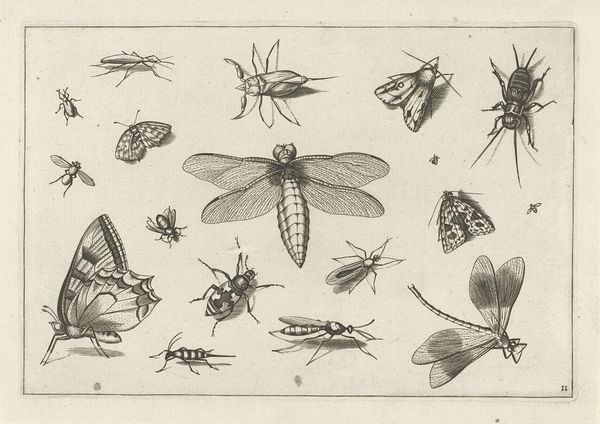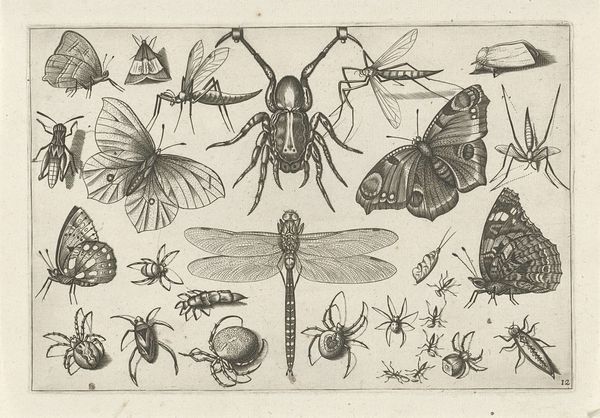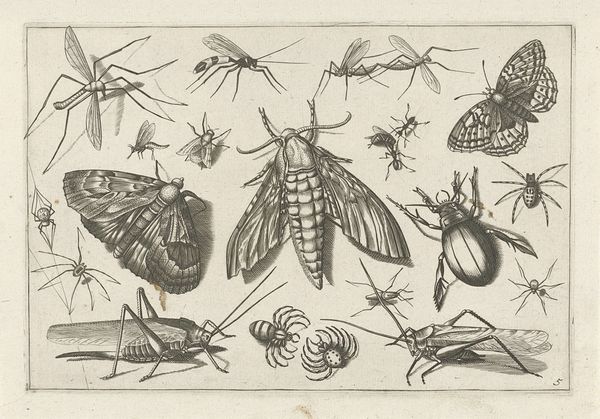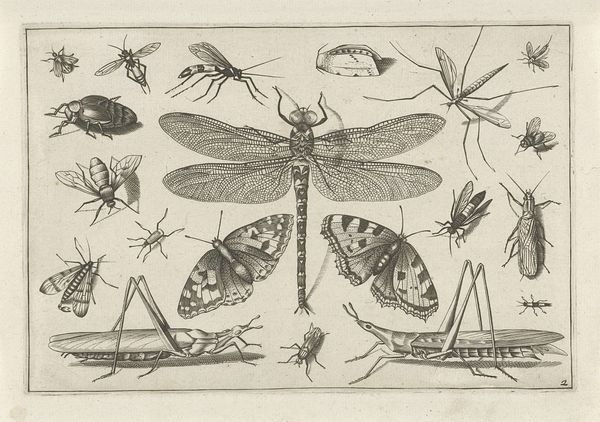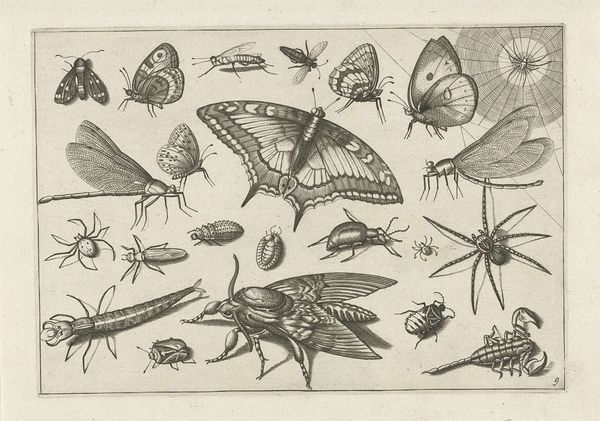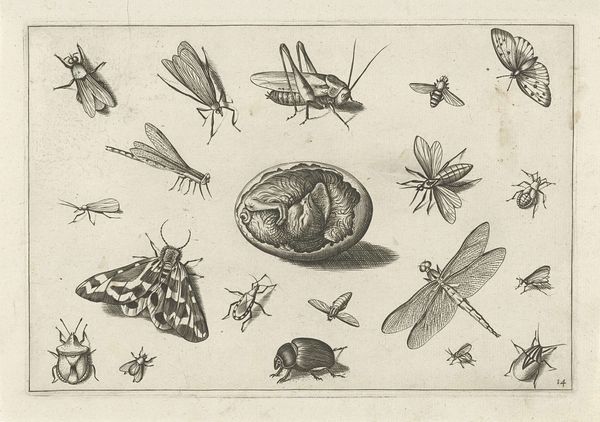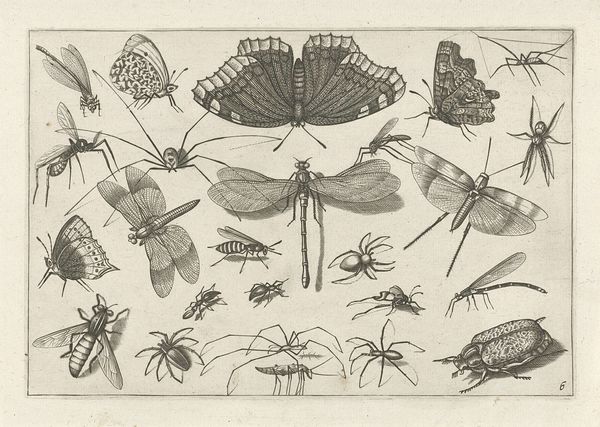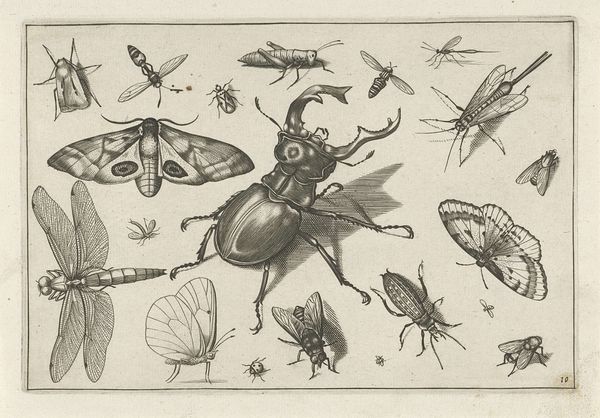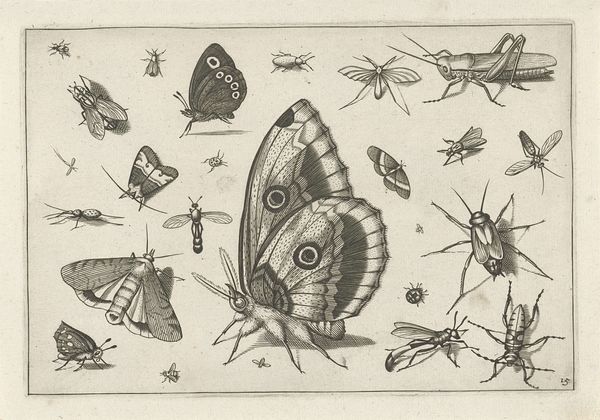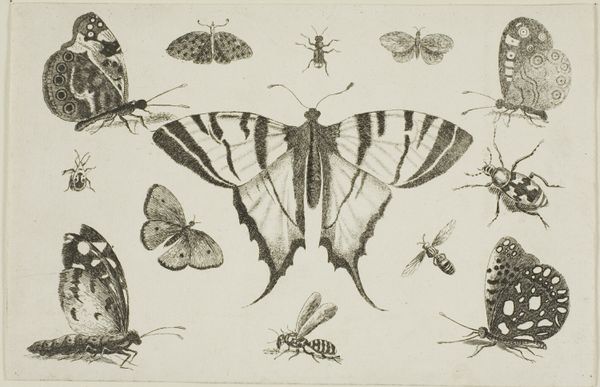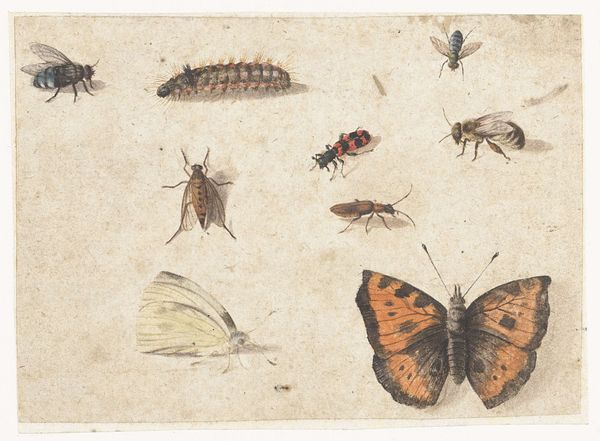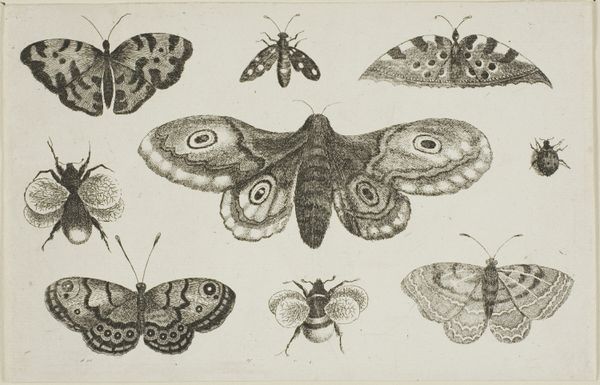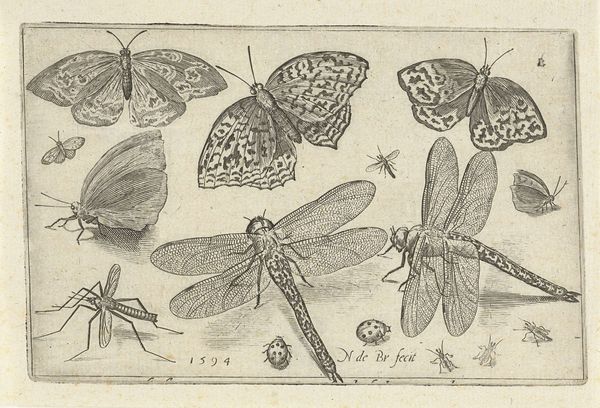
#
light pencil work
#
quirky sketch
#
pen sketch
#
old engraving style
#
personal sketchbook
#
pen-ink sketch
#
pen work
#
sketchbook drawing
#
storyboard and sketchbook work
#
sketchbook art
Dimensions: height 136 mm, width 199 mm
Copyright: Rijks Museum: Open Domain
Curator: This sheet of studies titled "Insecten" from around 1630 is attributed to Jacob Hoefnagel. It’s an intriguing assembly of various insects, depicted in pen and ink. What strikes you first about it? Editor: Oh, a certain… stillness. A quietude. Even though there are so many of them buzzing around on the page – at least in implication, a lovely impression of scientific specimen pinned carefully for observation. What's its context in Hoefnagel's wider output? Curator: He was renowned for his natural history illustrations, and this feels like a page straight from a naturalist's sketchbook. There's an appealing balance between the meticulous detail and the casual arrangement. He was influenced by his father's earlier work too, which explored similar themes. Editor: This interest in nature during this period reflected, of course, European expansion, scientific classification, and, problematically, colonial exploitation. Can we ignore that even meticulous drawings of insects carried the whiff of European ambitions overseas? Curator: Absolutely, that is a critical element of the larger story of images such as this! The very act of naming and categorizing these creatures reinforces a hierarchical worldview, I'd even go further to suggest this mindset informed colonial structures. It isn’t just an innocent depiction, is it? The starkness of the medium enforces the idea of observing under a powerful lens, removing life and natural cycles of symbiosis and even indifference from our analysis of the specimens here. Editor: Exactly! Even in what seems like harmless drawings, we have to consider how knowledge is constructed and what power dynamics are at play. Who gets to look? Who gets to name? Who is erased in the process? It allows us to reframe nature not just as beautiful, fragile and whimsical – or fearsome even – but always embroiled with societal factors such as race, identity, and historical inequalities, Curator: So, seeing the "Insecten", the viewer must consider how even something so simple as rendering these specimens participates in shaping understanding of nature as it's captured by and seen through colonial eyes, yes? Fascinating. Editor: Precisely, and art encourages those complex, uncomfortable connections. It lets the seemingly objective be interrogated and expanded into discussions of identity and exploitation, or just simple awareness. Thanks for the consideration!
Comments
No comments
Be the first to comment and join the conversation on the ultimate creative platform.
